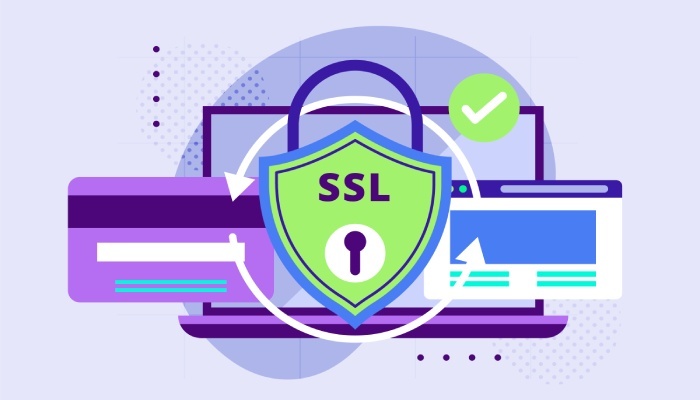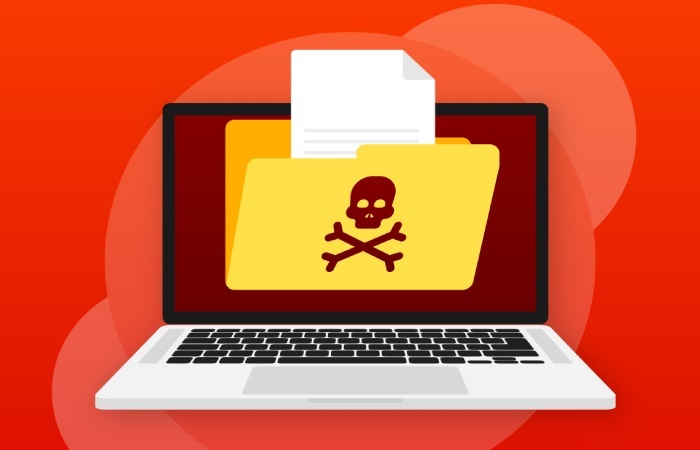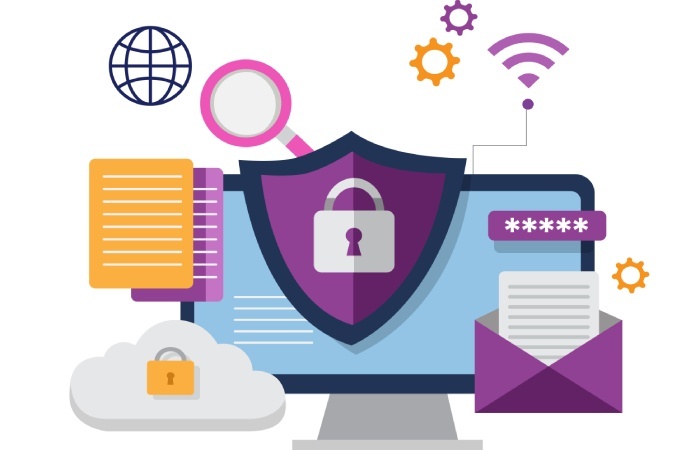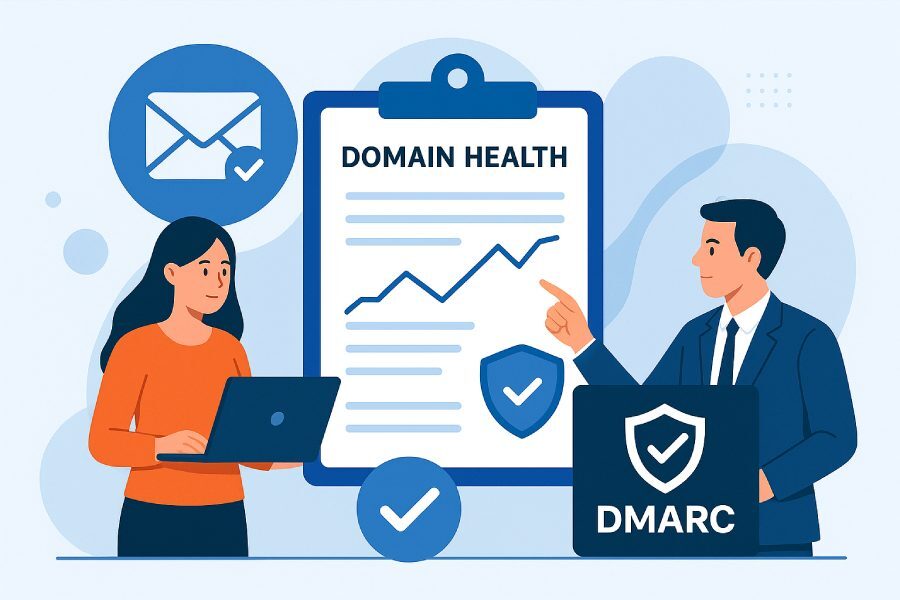Ensure Email Authentication With A Domain Health Report Featuring Advanced Dmarc Insights
In today’s digital landscape, protecting your domain and ensuring the authenticity of your emails are essential to maintaining trust, reputation, and deliverability. A Domain Health Report provides deep visibility into the security and performance of your domain by analyzing critical factors such as DNS configurations, SPF, DKIM, and DMARC authentication, as well as blacklist status and SSL validity. By continuously monitoring these elements, organizations can identify vulnerabilities early, prevent phishing attempts, and maintain a strong email sender reputation.
Integrating advanced DMARC insights into your domain health strategy elevates email authentication to a new level. DMARC reporting offers actionable intelligence by revealing unauthorized senders, alignment issues, and potential spoofing activities. These insights empower businesses to fine-tune their authentication policies, strengthen domain compliance, and protect their brand identity across global email ecosystems. With proactive monitoring and detailed DMARC analytics, organizations can confidently secure their communication channels and ensure the integrity of every message they send.
Understanding Domain Health: What It Means for Email Security
Domain health is a critical metric that reflects the overall standing of your domain in terms of domain security, reputation, and compliance with email security standards. Maintaining a pristine domain reputation directly influences email deliverability, reducing the risk of emails bouncing or being flagged by spam filtering systems. A domain with poor DNS records, outdated SSL certificate status, or nearing domain expiration can compromise both web reputation and email infrastructure integrity.
Monitoring DNS configuration errors and ensuring DNSSEC validation are essential components of maintaining domain health. Issues such as improper mail server configuration or delayed DNS propagation can trigger DNS health check alerts, signaling potential vulnerabilities. WHOIS information accuracy is equally important, as domain status reports indicating expired or misregistered domains can increase exposure to domain blacklisting attempts or IP blocklist listings.
Furthermore, domain health extends to proactive domain monitoring and theme analytics, incorporating blacklists monitoring from entities like Spamhaus or Barracuda Reputation System. Tracking IP reputation and email sender reputation through platforms such as Sender Score (Validity) and Google Postmaster Tools guarantees ongoing brand protection and phishing prevention by minimizing attack vectors exploited by email fraud detection algorithms.

The Role of Email Authentication Protocols: SPF, DKIM, and DMARC Explained
Email authentication forms the bedrock of trustworthy email exchange, leveraging DNS records such as SPF records, DKIM signatures, and DMARC policies to validate the legitimacy of sender domains.
- SPF Record (Sender Policy Framework) allows domain owners to specify which IP addresses or mail servers are authorized to send emails on their behalf. Proper SPF configuration reduces the email spam score and helps prevent spoofing, a key email phishing score factor monitored by security solutions like Proofpoint and Symantec.
- DKIM (DomainKeys Identified Mail) adds a cryptographic DKIM signature to outgoing email headers, ensuring message integrity and confirming that the email has not been altered during transit. SMTP diagnostics can verify DKIM signature validity to assure mail servers and spam filtering services such as Mimecast and Trend Micro of the authenticity of messages received.
- DMARC (Domain-based Message Authentication, Reporting & Conformance) builds on SPF and DKIM by enabling domain owners to specify actions—quarantine, reject, or none—in the event of failed authentication checks. DMARC policies also facilitate domain compliance and enhance phishing prevention by providing domain owners with visibility through extensive DMARC reports delivered back via email.
These protocols collectively guard email infrastructure by enforcing email authentication, encouraging adherence to email security standards, and mitigating risks posed by IP blocklist threats and domain blacklisting.
How a Domain Health Report Assesses Email Authentication
A comprehensive domain health report evaluates the entirety of DNS records, including MX records, SPF records, DKIM keys, and DMARC policies, integral to email authentication. The report analyzes mail server configuration and DNS propagation times to detect misconfigurations that may adversely impact email deliverability.
Using insights from threat intelligence providers such as Talos Intelligence Group, Cisco Talos, and Barracuda Networks, these reports will scan real-time blacklist monitoring databases, including Spamhaus and Barracuda Reputation System listings. The domain analytics component measures email sender reputation and IP reputation, correlating these with email bounce rates and email spam scores to assess deliverability effectiveness.
Moreover, domain health reports integrate data from trusted sources such as MX Toolbox and Microsoft SNDS to provide email deliverability analytics and SMTP diagnostics. Email headers analysis within these reports facilitates detailed email fraud detection, helping identify phishing attempts and ongoing spam filtering efficacy.
DNS health checks embedded in domain health reports encompass DNSSEC validation, DNS configuration errors, and ensure SSL certificate status is current to maintain TLS encryption, an essential aspect of domain security and trusted communication.

Deep Dive into DMARC: Advanced Insights and Its Importance
DMARC is a critical tool for enhancing email authentication and domain security, providing domain owners with granular control and visibility over their email ecosystem. Advanced DMARC insights derive from comprehensive DMARC reports, which include detailed status of SPF and DKIM alignment, domain compliance, and potential unauthorized sources attempting to send emails on behalf of the domain.
These advanced reports leverage domain verification systems powered by Valimail (ValiMail) and Return Path, enabling organizations to fine-tune DMARC policies based on real-world threat intelligence and blacklisting data. DMARC report analysis highlights potential issues affecting email deliverability, such as high email bounce rates or elevated email phishing scores.
Integration with email security platforms like Proofpoint and Mimecast further enriches DMARC analytics by correlating email spam scores with email phishing score trends, providing actionable intelligence on emerging threats. DMARC aids in brand protection by blocking spoofed emails that could harm web reputation or increase susceptibility to email fraud detection evasion.
By using DMARC reports alongside domain monitoring tools, administrators can promptly detect IP blocklist activity, suspicious sender patterns, and any DNS configuration errors impacting authentication efficacy.
Setting Up Proper DMARC Policies for Optimal Protection
Implementing a robust DMARC policy is essential for optimal domain security and email deliverability. Proper policy configuration begins with setting an initial policy to “none,” allowing domain owners to collect data without affecting email flow. This phase permits domain analytics specialists to evaluate SPF and DKIM alignment, IP reputation, and sender score metrics.
Next, gradual enforcement with policies such as “quarantine” sends suspicious emails to recipients’ spam folders, supporting spam filtering mechanisms employed by Google Postmaster Tools and Microsoft SNDS. Finally, shifting to a strict “reject” policy ensures outright rejection of unauthenticated emails, substantially reducing domain blacklisting risks and protecting against phishing.

During this process, continuous blacklist monitoring and blocklist removal efforts are crucial. Leveraging tools like MX Toolbox to monitor DNS propagation and conduct DNS health checks ensures that all DNS records, including MX and SPF records, are accurate and comply with latest email security standards.
Additionally, ensuring DNSSEC validation and periodically reviewing SSL certificate status and TLS encryption provide layers of security essential for brand protection. Regular WHOIS information updates and vigilance regarding domain expiration prevent lapses that may open up vulnerabilities.
Provider-specific reputation systems such as Barracuda Reputation System and Sender Score (Validity) afford valuable feedback loops, allowing email infrastructure owners to adjust SMTP diagnostics and mail server configurations in pursuit of reducing email bounce rates and improving overall email sender reputation.
In conclusion, setting up proper DMARC policies fortified by detailed domain health reports and continuous domain monitoring empowers organizations to effectively combat email phishing, safeguard domain reputation, and bolster email deliverability through comprehensive email fraud detection and email security standards compliance.
Common Issues Identified by Domain Health Reports and How to Fix Them
A thorough domain health report provides critical insights into various factors impacting your domain reputation and email deliverability. Common issues flagged include misconfigured DNS records, such as missing or incorrect SPF record, DKIM signature, and MX records, which are fundamental email authentication mechanisms. Errors in mail server configuration or DNS configuration errors can disrupt DNS propagation, causing intermittent email failures or increased email bounce rate.
Another frequent red flag is domain blacklisting, often triggered by a poor sender score or compromised IP reputation. This can result in your domain or IP appearing in renowned IP blocklist databases like Spamhaus or Barracuda Reputation System, severely hindering your email deliverability analytics. Domain status report anomalies such as expired SSL certificate status, outdated domain expiration, or incorrect WHOIS information also weaken domain security and web reputation, increasing susceptibility to phishing attempts.
Resolving these issues begins with a comprehensive DNS health check using tools like MX Toolbox or Oracle Dyn to detect DNSSEC validation failures and validate correct DNS records setup. Implementing strong email authentication via SPF, DKIM, and DMARC is vital.
For domain blacklisting, timely blacklist monitoring followed by blocklist removal procedures, often coordinated through entities such as Spamhaus or Trend Micro, restores sender credibility. Ensuring robust mail server configuration aligned with email security standards and enabling TLS encryption further fortifies the email infrastructure against threats flagged in email phishing score analyses.

Integrating DMARC Reporting into Your Domain Health Monitoring
Incorporating DMARC reports into your domain health monitoring framework is essential for ongoing domain protection and compliance. DMARC reports deliver granular insight into email authentication outcomes, revealing sources that pass or fail SPF and DKIM checks. This data is indispensable for improving domain verification accuracy and preventing impersonation attacks.
Platforms such as ValiMail and Valimail specialize in automating DMARC report analysis, blending threat intelligence and domain analytics for actionable insights. Coupling DMARC with Google Postmaster Tools and Microsoft SNDS enhances visibility into email sender reputation across major providers, enabling nuanced email deliverability analytics. Regularly reviewing DMARC reports supports phishing prevention by detecting unauthorized senders which boosts brand protection and reduces the risk of email fraud detection events.
Automating DMARC reporting also integrates with blacklist monitoring tools from Cisco Talos and Barracuda Networks to correlate authentication failures with domain blacklisting trends. This combined approach aids in fine-tuning your email authentication policies, optimizing SPF record and DKIM signature configurations, and ultimately improving your email spam score.
Using Domain Health Reports to Detect and Prevent Phishing Attacks
Domain health reports are invaluable for identifying pivotal indicators of phishing attacks, including irregularities in DNS records, suspicious patterns in SMTP diagnostics, and anomalies in email headers analysis. Abnormalities in domain status reports, unexpected changes in DNS propagation, or sudden spikes in email bounce rate can signal attempted email phishing campaigns targeting your domain.
Effective phishing prevention hinges on continuous domain monitoring supported by threat intelligence feeds from entities like Talos Intelligence Group and Symantec. Monitoring your IP reputation and email phishing score across these sources enables early detection of malicious activity. Using email fraud detection algorithms and spam filtering engines from providers such as Mimecast and Proofpoint helps isolate and block phishing attempts before users receive malicious emails.
Moreover, implementing comprehensive email security standards, including enforced DMARC policies, DKIM signature validation, and strong SPF records, helps authenticate legitimate emails while rejecting spoofed messages. Enabling DNSSEC validation strengthens domain security by protecting against DNS hijacking often exploited in phishing schemes.

Tools and Platforms for Generating Comprehensive Domain Health Reports
A variety of specialized tools and platforms exist to generate detailed domain health reports essential for maintaining and improving domain reputation and email sender reputation. MX Toolbox remains a prominent choice, offering DNS health check, blacklist monitoring, and SMTP diagnostics features. Similarly, Google Postmaster Tools and Microsoft SNDS provide domain verification insights from major mailbox providers, highlighting email deliverability metrics tied to your IP reputation and sender score.
Spamhaus and Barracuda Reputation System supply crucial data on domain blacklisting status and IP blocklist membership, facilitating prompt blocklist removal actions. For in-depth email phishing score and email spam score evaluations, solutions from Trend Micro, Symantec, and Cisco Talos offer integrated threat intelligence and email fraud detection capabilities.
ValiMail and Return Path are notable for managing DMARC report integration, automating the analysis of authentication records such as SPF and DKIM while ensuring domain compliance. Cloudflare and GoDaddy provide domain monitoring services encompassing SSL certificate status, domain expiration alerts, and WHOIS information updates to maintain robust domain security and web reputation. Oracle Dyn and DynDNS deliver DNS and mail server configuration management, enhancing DNS propagation efficiency and mitigating DNS configuration errors.
Best Practices for Maintaining a Healthy Domain and Ensuring Email Authentication
Sustaining a healthy domain demands a multi-layered approach to domain security and email infrastructure management. Begin by maintaining up-to-date DNS records, ensuring the SPF record accurately includes all authorized sending IPs, the DKIM signature is properly configured and periodically rotated, and MX records point to correctly configured mail servers. Regular DNS health check and DNSSEC validation should be standard to prevent configuration errors and DNS hijacking.
Monitor your domain status report actively for domain expiration, SSL certificate status, and WHOIS information accuracy to prevent lapses that compromise brand protection. Employ intelligent blacklist monitoring integrated with threat intelligence services like Barracuda Networks and Spamhaus to avoid domain blacklisting through early detection and rapid blocklist removal.

Deploy DMARC with a policy of at least “quarantine” and analyze DMARC reports regularly using platforms like ValiMail, coupled with Google Postmaster Tools and Microsoft SNDS insights, to enhance domain verification and email sender reputation. Enforce email security standards including TLS encryption to secure SMTP connections and implement robust spam filtering to reduce email spam score and phishing risk.
Finally, cultivate ongoing email deliverability analytics, leveraging sender score data from Validity and domain analytics to optimize email campaigns. Consistent domain monitoring paired with periodic SMTP diagnostics and email headers analysis assures swift resolution of email infrastructure issues, safeguarding your domain’s web reputation and maximizing deliverability.
FAQs
What is a domain health report and why is it important?
A domain health report provides a comprehensive analysis of your domain’s DNS records, email authentication settings, mail server configuration, and reputation metrics. It is crucial for identifying configuration errors, preventing domain blacklisting, and ensuring high email deliverability and domain security.
How do SPF, DKIM, and DMARC work together for email authentication?
SPF verifies if an email comes from an authorized IP address, DKIM adds a cryptographic signature to validate message integrity, and DMARC leverages both to enforce policies and generate reports on email authentication results. Together, they significantly reduce phishing and spoofing risks.
What tools can help monitor my domain’s reputation and security?
Popular tools include MX Toolbox for DNS and blacklist monitoring, Google Postmaster Tools and Microsoft SNDS for sender reputation analytics, Spamhaus for blacklisting status, and Valimail for DMARC report management. Many providers also offer integrated threat intelligence and email deliverability analytics.

How can DMARC reports help prevent phishing?
DMARC reports provide visibility into unauthorized email sources using your domain, enabling you to identify and block spoofed messages. Continuous monitoring helps refine policies and boost brand protection by reducing phishing incidents.
What steps should I take if my domain is blacklisted?
First, use blacklist monitoring tools to identify the source of listing. Then, remediate issues like compromised accounts, misconfigured DNS records, or spam activity. Finally, follow the blocklist removal procedures prescribed by the blacklist authorities and implement preventive email authentication measures.
Why is TLS encryption important for email infrastructure?
TLS encryption secures the communication channel between mail servers, preventing interception and tampering of emails in transit. It strengthens domain security and supports compliance with email security standards.
Key Takeaways
- Regular domain health reports identify DNS, email authentication, and security issues that affect domain reputation and email deliverability.
- Integration of DMARC reporting with tools like ValiMail and Google Postmaster Tools enhances phishing prevention and domain compliance.
- Effective domain monitoring includes blacklist monitoring, TLS encryption enforcement, and maintaining accurate SPF, DKIM, and MX records.
- Leveraging advanced platforms such as MX Toolbox, Spamhaus, and Barracuda Reputation System aids in proactive domain security and blocklist removal.
- Adherence to email security standards and continuous email deliverability analytics sustain brand protection and optimize email sender reputation.







